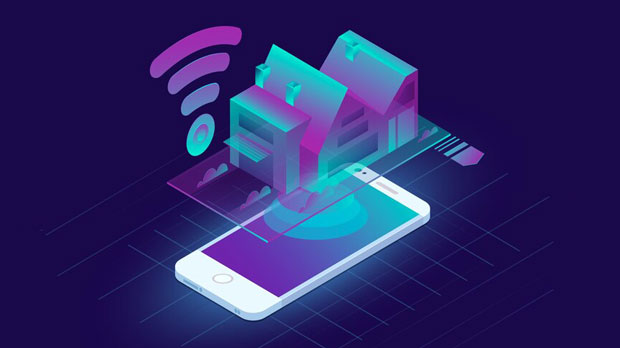In the rapidly evolving world of data scraping, web crawling, and automated tasks, proxies have become a crucial element in maintaining anonymity and stability. Among the various types of proxies available, datacenter proxies are favored for their speed and efficiency. However, the question remains: does PYPROXY's datacenter proxies support API automation management? This article delves into this issue, exploring the capabilities, benefits, and possible drawbacks of Pyproxy datacenter proxies in the context of API automation management. We'll break down the different aspects of their functionality, examining whether they meet the needs of businesses or individuals looking to automate their proxy management effectively. Understanding Pyproxy Datacenter ProxiesBefore diving into the details of API automation, it's essential to understand what Pyproxy datacenter proxies are and how they work. Datacenter proxies are typically hosted on servers in a data center, rather than through an Internet Service Provider (ISP). This makes them fast, cost-effective, and highly scalable. Pyproxy offers a range of datacenter proxies that are designed to handle large-scale web scraping, ad verification, and other automated tasks.Pyproxy's datacenter proxies come with the primary benefit of being highly reliable and providing users with high-speed connections. They offer users the flexibility to bypass geo-restrictions, scrape websites anonymously, and avoid IP bans, which are common obstacles faced during web automation tasks.The Role of API Automation in Proxy ManagementAPI automation refers to the process of managing and interacting with proxy services using an Application Programming Interface (API). APIs allow users to programmatically manage proxies, monitor their usage, and integrate them into custom applications. This is particularly important for businesses or developers who need to automate the process of proxy rotation, usage tracking, and allocation.API automation can help improve efficiency by enabling real-time changes to proxy settings, allowing for automated responses to issues like IP bans, proxy failures, or connection timeouts. Furthermore, API automation provides a consistent, reliable way to scale operations without the need for manual intervention.Does Pyproxy Support API Automation for Datacenter Proxies?Now, the question remains: does Pyproxy provide API support for managing datacenter proxies? The short answer is yes, but with certain caveats.Pyproxy does offer an API for managing their proxy services, including the ability to automate tasks such as adding, removing, or rotating proxies. The API allows developers to seamlessly integrate proxy management into their applications, providing a more hands-off approach to web scraping or data extraction.One of the primary benefits of using the API for automation is the ability to programmatically manage large pools of proxies, which is vital for scaling operations. In addition, users can automate tasks like checking proxy health, setting up proxy rotation schedules, and managing bandwidth usage through the API.Key Features of Pyproxy’s API for Datacenter Proxies1. Proxy Rotation Management One of the essential features of Pyproxy’s API is its ability to manage proxy rotation. With API automation, users can set up rules for automatic proxy rotation at specified intervals or based on specific conditions. This helps prevent IP blocks and ensures that web scraping tasks run smoothly without interruption.2. Health Monitoring Using Pyproxy’s API, users can monitor the health of their proxies in real-time. The API can return status updates for each proxy, including information on response times, connection stability, and availability. This automated monitoring system makes it easier to detect and resolve issues before they impact operations.3. Automatic IP Replacements Another benefit of API automation is the ability to replace non-functioning proxies automatically. When an IP address becomes flagged or blocked, the API can automatically replace it with a fresh one from the pool, ensuring continuous service without any downtime.4. Bandwidth and Usage Management For users managing large-scale operations, the ability to track bandwidth usage and proxy allocation is crucial. Pyproxy’s API enables users to monitor proxy consumption in real-time, set limits on usage, and receive notifications when limits are close to being reached. This ensures that resources are used efficiently without overextending limits or encountering unexpected costs.5. Integration with Custom Applications Pyproxy’s API is designed for seamless integration with third-party applications. Whether you're using Python, Node.js, or other programming languages, Pyproxy's API can be easily integrated into custom-built web scraping tools or business applications. This flexibility allows users to build tailored solutions based on their specific needs.Benefits of Using API Automation with Pyproxy Datacenter Proxies1. Increased Efficiency API automation eliminates the need for manual intervention in proxy management. With automated processes, businesses and developers can run their operations more efficiently, saving valuable time and reducing the risk of human error.2. Scalability As your web scraping or automation needs grow, API automation enables seamless scaling. Whether you need to manage thousands of proxies or rotate proxies at more frequent intervals, the API allows you to scale without worrying about complex manual configurations.3. Reliability and Consistency Automated proxy management ensures a high level of reliability and consistency. The API’s health monitoring and automatic IP replacement systems help prevent downtime and ensure that users always have access to functional proxies.4. Cost-Effective By automating proxy management, users can reduce operational costs. The efficiency gained through API automation allows users to optimize their proxy usage, minimizing the likelihood of overuse or wasted resources, which can lead to unnecessary expenses.Challenges and Considerations in API AutomationWhile API automation offers numerous benefits, there are some challenges that users should be aware of.1. API Limitations Not all API features are available to all users, and some limitations may exist in terms of the number of proxies you can manage or the frequency of requests allowed. It's essential to understand these limitations before integrating the API into your application.2. Complexity for Beginners For those new to API management, the setup process can be somewhat complex. Understanding how to interact with the API, configure proxy rotation schedules, and set up proper error handling might require some learning and experience.3. Possible Overreliance on Automation Although automation can significantly improve efficiency, it's essential to strike a balance between automated processes and manual oversight. Overreliance on automation without proper monitoring can lead to unnoticed issues, especially in large-scale operations.Conclusion: Is API Automation Management Worth It for Pyproxy Datacenter Proxies?In conclusion, Pyproxy’s datacenter proxies do support API automation management, providing valuable tools for businesses and developers to manage large-scale proxy operations. The ability to automate proxy rotation, health monitoring, IP replacements, and bandwidth management significantly enhances operational efficiency and scalability. However, users should be aware of the potential challenges, including API limitations and the complexity of integration, especially for beginners.Ultimately, if you are looking for a reliable, scalable, and cost-effective solution for web scraping or data automation tasks, Pyproxy’s API automation management offers a solid option. With the right setup, it can save time, reduce manual effort, and provide consistent, high-quality service for your automated tasks.
Oct 24, 2025



































































